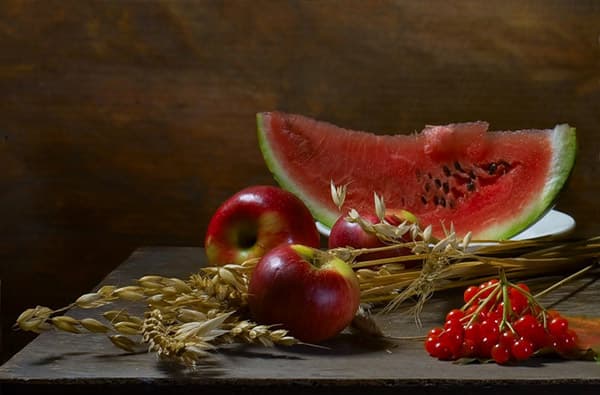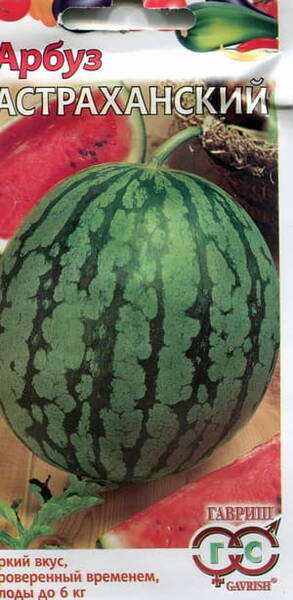Your shopping cart is empty!
Arbuus "Astrahansky"
Watermelon "Astrakhansky".
Time-tested!
Mid-season (the period from mass germination to the first harvest is 70-81 days). The plant is medium-climbing. The leaf blade is medium, bluish-green, the dissection of the leaf blade is average.
The shape of the fruit is round and elongated-round, with a smooth, slightly segmented surface. The background colour is green and there is a grid on the background. The pattern is stripes of medium width, dark green in colour.
The bark is medium thick, light green, leathery. Fruit weight is 4-6 kg. The pulp is red, dense, tender, very sweet, juicy. The taste is good.
Designed for cultivation in film greenhouses and in open ground. Transportability of fruits is high. Demanding on warmth. Resistant to fuarosis and aracnose.
Sowing seedlings in late April - early May. The period for growing seedlings is 30-35 days, planting is in late May - early June. Direct sowing in the ground in April-May, when the threat of frost has passed. The plants are tied to a trellis, all side shoots are removed to a height of 50 cm, and subsequent shoots are pinched over 1-3 leaves. It is possible to grow in a free culture spread out. Watering is moderate, especially during the period of fruit ripening. Commercial yield is about 5 kg/m2. Resistant to anthracnose, affected by Fusarium wilt to a less than average degree. Planting pattern 70x150 cm.
Time-tested!
Mid-season (the period from mass germination to the first harvest is 70-81 days). The plant is medium-climbing. The leaf blade is medium, bluish-green, the dissection of the leaf blade is average.
The shape of the fruit is round and elongated-round, with a smooth, slightly segmented surface. The background colour is green and there is a grid on the background. The pattern is stripes of medium width, dark green in colour.
The bark is medium thick, light green, leathery. Fruit weight is 4-6 kg. The pulp is red, dense, tender, very sweet, juicy. The taste is good.
Designed for cultivation in film greenhouses and in open ground. Transportability of fruits is high. Demanding on warmth. Resistant to fuarosis and aracnose.
Sowing seedlings in late April - early May. The period for growing seedlings is 30-35 days, planting is in late May - early June. Direct sowing in the ground in April-May, when the threat of frost has passed. The plants are tied to a trellis, all side shoots are removed to a height of 50 cm, and subsequent shoots are pinched over 1-3 leaves. It is possible to grow in a free culture spread out. Watering is moderate, especially during the period of fruit ripening. Commercial yield is about 5 kg/m2. Resistant to anthracnose, affected by Fusarium wilt to a less than average degree. Planting pattern 70x150 cm.
















